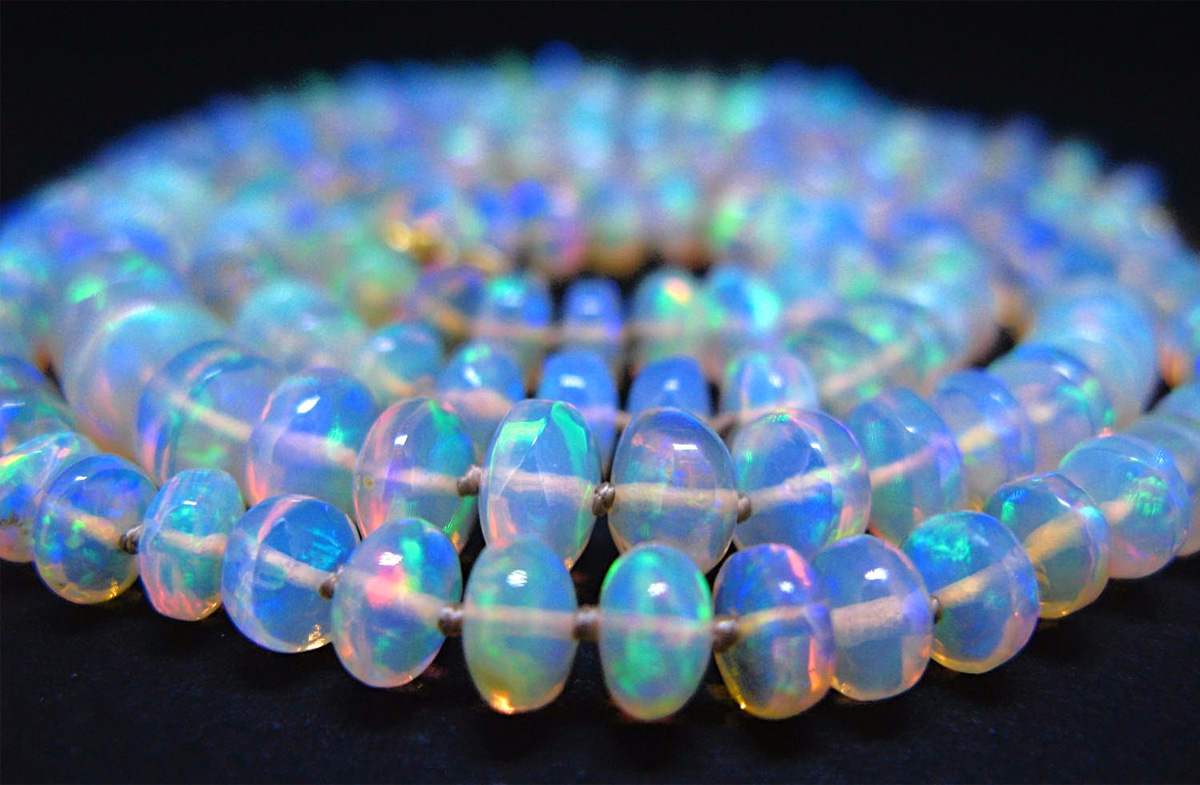
PHYSICAL PROPERTIES
- GROUP Silicates - tectosilicates
- COMPOSITION SiO2·nH2O
- COLOR Colourless, white, orange yellow, red, white or dark blue
- CRYSTALLINE SYSTEM Amorphous
- CRYSTALLINE HABIT Massive
- HARDNESS 5 - 6
- FRACTURE Conchoidal
- EXFOLIATION Null
- GLOSS Vitreous
- STRIP White
- TRANSPARENCY From transparent to translucent
- SPECIFIC GRAVITY 1.92 - 2.3
- REFRACTIVE INDEX 1.37 - 1.47
MINERALOGICAL CHARACTERISTICS
The opal is a mineraloid made up of hardened silica gel. It contains between 5 and 10 percent water and its structure is usually compact and amorphous. It is characterized by its reflective effect, due to the latticework of the microscopic particles that compose it, through which the light passes showing flashes of colors. The opal that presents color games is called noble opal, and is highly valued for making jewelry.
There are opals of various colors, white (white opal or milky), reddish orange (fire-opal) , yellow, brown, green, black, bluish or colorless. These colors are due to the presence of iron, manganese and organic carbon.
The opal is found in cavities of volcanic rocks, in deposits of hot springs and in accumulations. It is also often found in the form of fossilized wood.
Deposits: Australia, Ethiopia, Mexico, United States, Peru, Canada and Slovakia.
THERAPEUTIC PROPERTIES
The opal is considered a mineral of powerful vibration that activates the "awakening". It is associated with love and passion. It encourages creativity and spontaneity, intensifies emotional states and helps release inhibitions. It enhances self-esteem and the will to live. It is recommended not to mix it with other minerals. On a healing level, opal helps heal all kinds of psychosomatic ailments.


